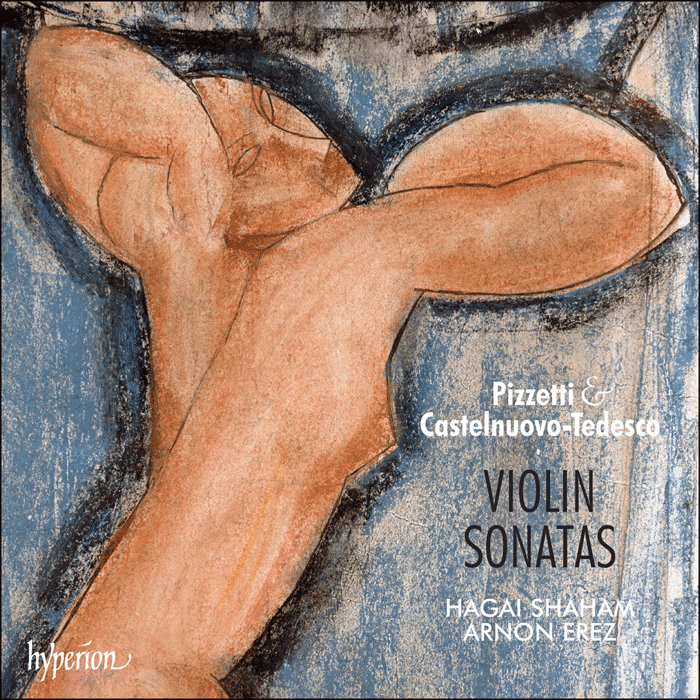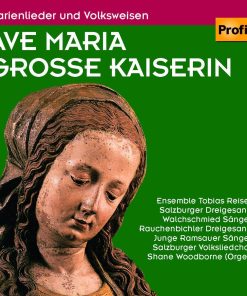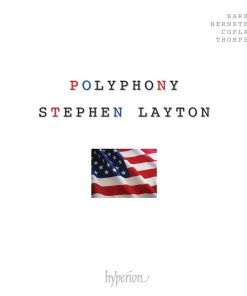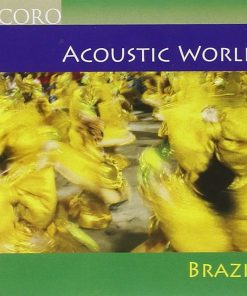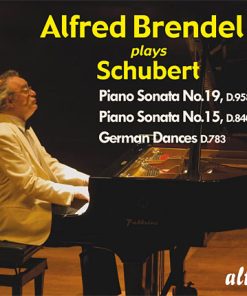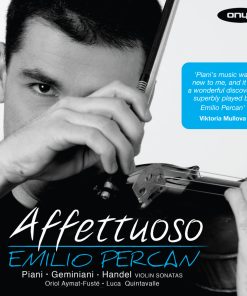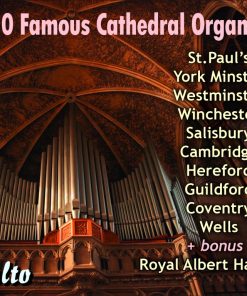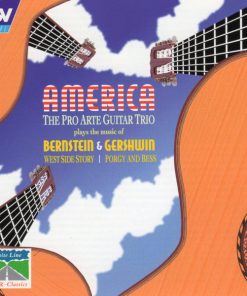Pizzetti & Castelnuovo-Tedesco: Violin Sonatas Hagai Shaham, Arnon Erez Hyperion
$ 20,99 $ 12,59

Violin Sonata in A major[29’59]Ildebrando Pizzetti (1880-1968)
1
Tempestoso[11’21]
2
Preghiera per gl’innocenti: Molto largo[9’31]
3
Vivo e fresco[9’07]
Tre canti[12’08]Ildebrando Pizzetti (1880-1968)
4
Affettuoso[4’12]
5
Quasi grave e commosso[3’52]
6
Appassionato[4’04]
Sonata quasi una fantasia Op 56[17’42]Mario Castelnuovo-Tedesco (1895-1968)
7
Prologo: Moderato e pensoso[6’40]
8
Intermezzo: Vivace e danzante[3’54]
9
Epilogo: Calmo[7’08]
Tre vocalizzi Op 55[8’43]Mario Castelnuovo-Tedesco (1895-1968), arr. Mario Corti (1882-1957)
10
Andantino (Pan ed Eco)[3’10]
11
Molto calmo e malinconico (Come una nenia marinaresca)[3’13]
12
Tempo di Fox Trot: Ironico e tagliente (American Music)[2’20]

Hagai Shaham and Arnon Erez continue their exploration of the early twentieth-century violin repertoire, turning this time to Italy. These musicians are noted for their full-blooded performances: here they revel exuberantly in the music’s operatic passion.
Other recordings by Hagai Shaham
Pizzetti was at the height of his fame at a time when Italian music was all the rage; his pupil Castelnuovo-Tedesco eventually fled Italian anti-semitism to embark on a successful career in Hollywood.
Pizzetti’s Violin Sonata in A major was described by the late John C G Waterhouse, Britain’s leading authority on twentieth-century Italian music, as ‘much the most impressive sonata for violin and piano that has ever been written by an Italian’. His Tre canti were written in 1924, originally for cello and piano, then transcribed by the composer for violin.
Castelnuovo-Tedesco’s Sonata quasi una fantasia, Op 56, was composed in 1929, with a dedication to the Hungarian violinist Adila Fachiri (also the dedicatee of Bartók’s two violin sonatas). The Tre vocalizzi were originally written in 1928 as vocalises for wordless voice and piano. They were subsequently arranged for violin and piano by Mario Corti, who saw the potential in these pieces for transcriptions that used violin techniques to imaginative effect, with extensive use of double-stopping and harmonics, as well as a greatly expanded compass, using octave transpositions to exploit the instrument’s entire range.
Fast Shipping and Professional Packing
Due to our longstanding partnership with UPS FedEx DHL and other leading international carriers, we are able to provide a range of shipping options. Our warehouse staff are highly trained to pack your goods exactly according to the specifications that we supply. Your goods will undergo a thorough examination and will be safely packaged prior to being sent out. Everyday we deliver hundreds of packages to our customers from all over the world. This is an indication of our dedication to being the largest online retailer worldwide. Warehouses and distribution centers can be located in Europe as well as the USA.
Orders with more than 1 item are assigned processing periods for each item.
Before shipment, all ordered products will be thoroughly inspected. Today, most orders will be shipped within 48 hours. The estimated delivery time is between 3-7 days.
Returns
The stock is constantly changing. It's not entirely managed by us since we are involved with multiple parties such as the factory and our storage. The actual stock can fluctuate at any time. Please understand it may happen that your order will be out of stock when the order is placed.
Our policy is valid for 30 days. If you haven't received your product within 30 days, we're not able to issue either a return or exchange.
You are able to return a product if it is unused and in the same condition when you received it. It must also still remain in the original packaging.
Related products
MUSIC CD
MUSIC CD
MUSIC CD
